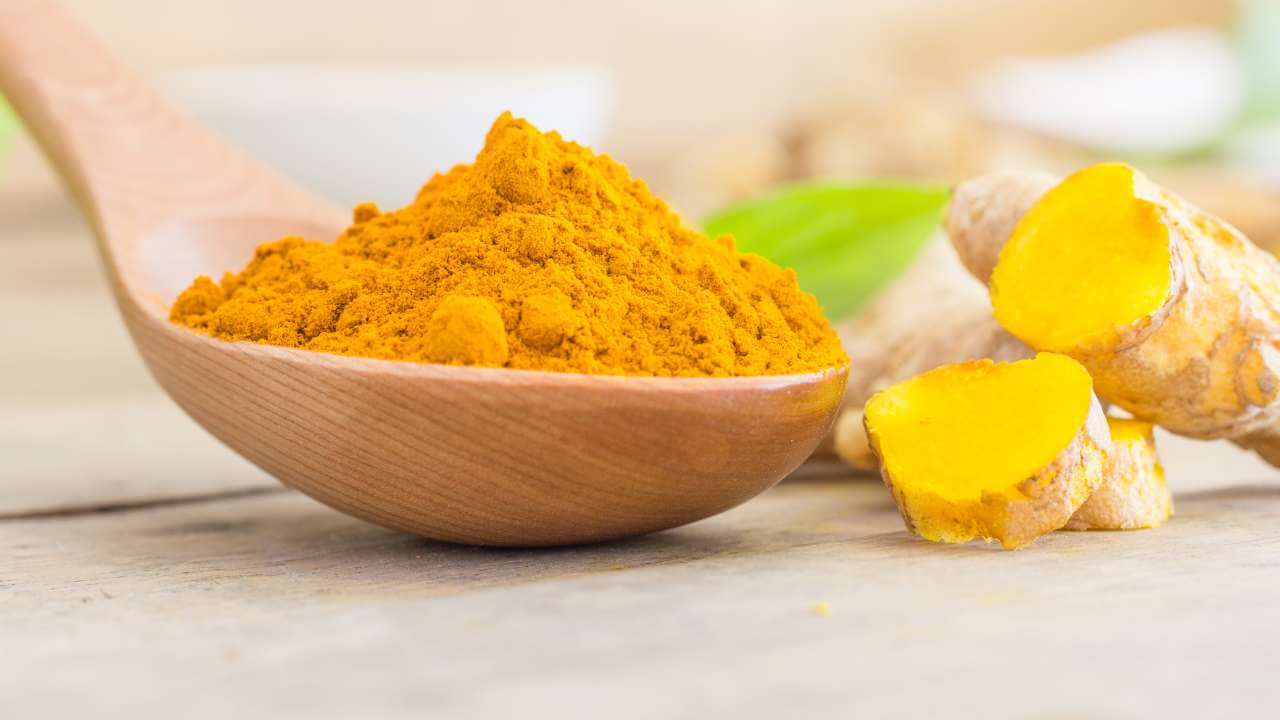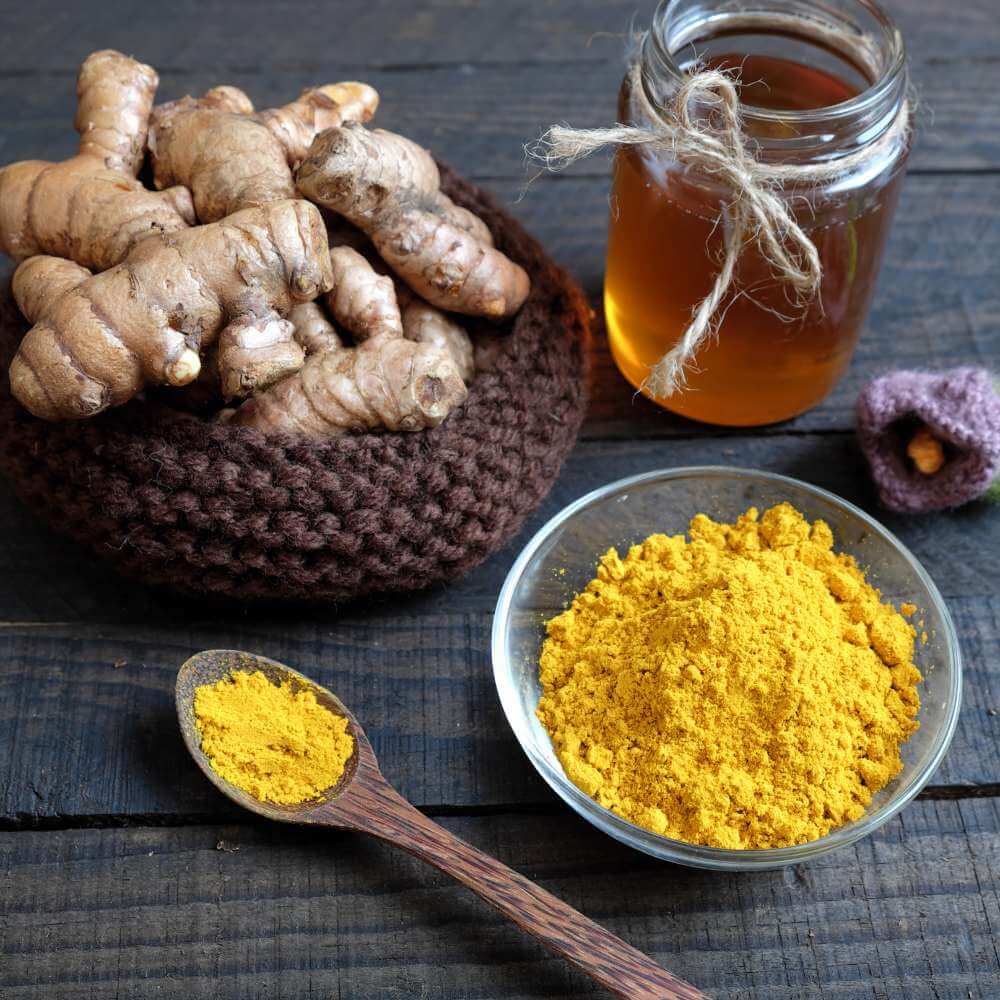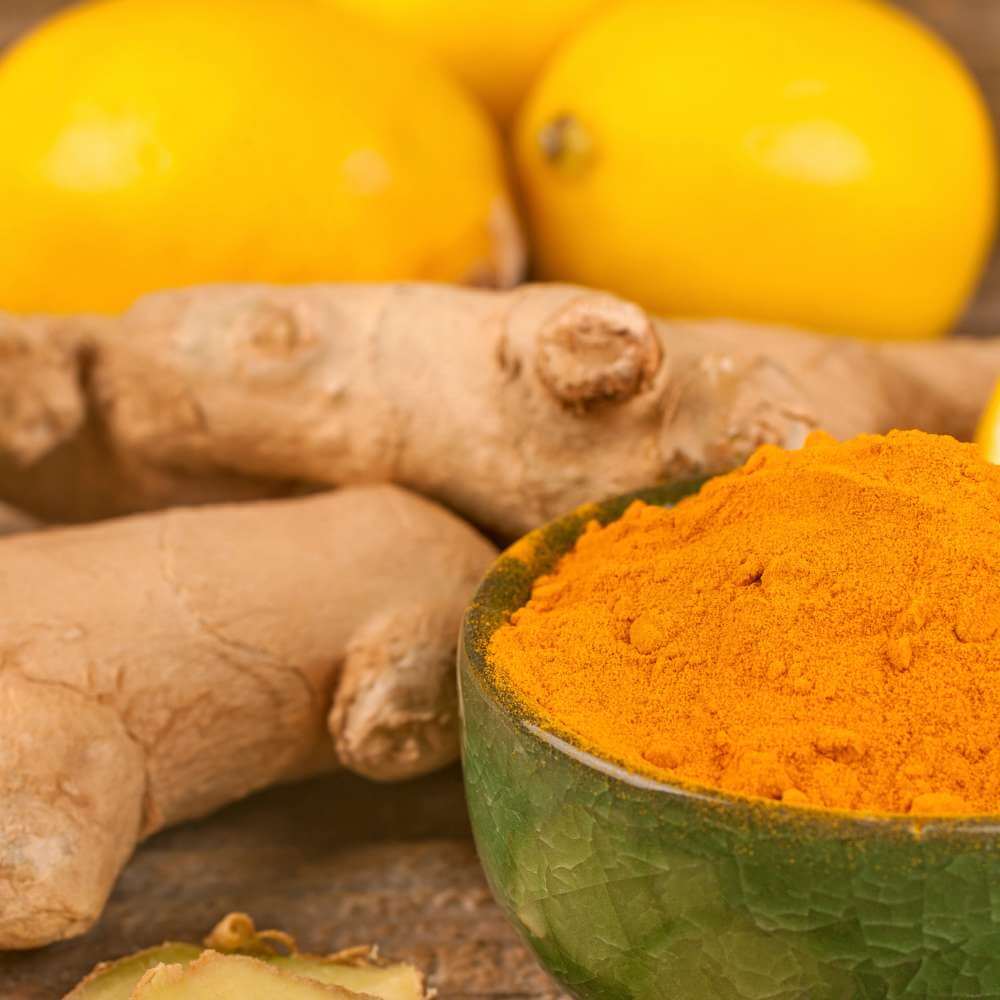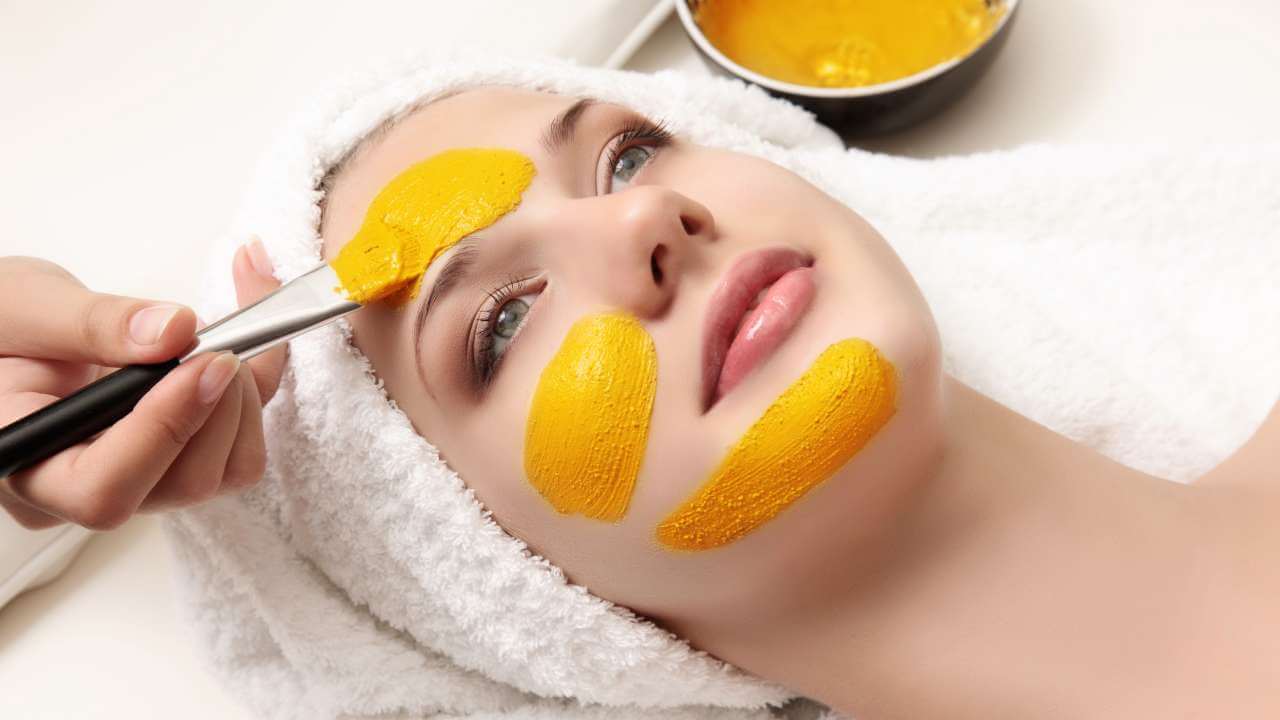If you're dealing with hyperpigmentation, oily skin, and acne scars, you know how frustrating it can be to achieve a clear, even skin tone.
But what if we told you that the solution could be as simple as turmeric powder? That's right - this popular spice has been used for centuries in Ayurvedic medicine and is now gaining recognition for its potent anti-ageing benefits for the skin.
Not only can turmeric help reduce hyperpigmentation and even out skin tone, but it's also great for oily skin types and can help reduce the appearance of acne scars. With so many benefits of turmeric for the skin, it's worth considering adding this golden spice to your skincare routine.
In this article, we'll dive into the benefits of turmeric and share tips on how to incorporate it into your routine with different turmeric face masks.
Get ready to discover the wonders of turmeric and transform your skin!

What is Turmeric?
Turmeric (Curcuma longa) is a spice that has been used for centuries in traditional medicine and cooking. Native to India and Southeast Asia, turmeric has a bright yellow color and a warm, slightly bitter taste. But beyond its culinary uses, turmeric has also been used for its medicinal properties, including its anti-ageing benefits for the skin.
Turmeric contains a powerful compound called curcumin, which is a natural anti-inflammatory with antioxidant properties. This makes it an excellent ingredient for soothing and brightening the skin. In fact, turmeric has been used in Ayurvedic medicine for thousands of years to treat a variety of skin conditions, from acne to eczema.
In recent years, turmeric has gained popularity in Western skincare as a natural and effective ingredient for treating hyperpigmentation by reducing dark spots, dark circles, and evening-out skin tone. Its anti-inflammatory properties can also help calm redness and irritation, making it a great choice for acne treatment and those with sensitive skin.
History of Turmeric Powder
In addition to its skincare benefits, turmeric has a long and fascinating history in traditional medicine. In India, turmeric has been used for its medicinal properties for over 4,000 years. It was used to treat a variety of ailments, from digestive issues to respiratory problems. It was also used topically to treat wounds and skin conditions.
Overall, turmeric is a powerful and versatile ingredient with a rich history in traditional medicine and skincare. Whether you're looking to even out your skin tone or simply enjoy the flavor of this vibrant spice, turmeric is definitely worth incorporating into your routine.
What is Hyperpigmentation?
Hyperpigmentation is a common skin condition that occurs when patches of skin become darker than the surrounding areas, resulting in dark spots and an uneven skin texture. This can happen due to an increase in melanin production in the skin, which is responsible for giving our skin its color. While most types of hyperpigmentation are not harmful, they can be a cosmetic concern for many people.
Causes
- Sun Damage: Exposure to UV rays can trigger an increase in melanin production, leading to sunspots or age spots.
- Hormonal Changes: Pregnancy, menopause, or the use of oral contraceptives can lead to a condition called melasma, which causes dark patches on the face and around the mouth.
- Inflammation: Skin inflammation caused by acne, eczema, or other skin conditions can trigger hyperpigmentation.
- Post-Inflammatory Hyperpigmentation (PIH): This occurs when the skin produces too much melanin causing dark spots in response to a skin injury or inflammation, such as a pimple, a bug bite, or shaving with a dull razor.
Symptoms
- Dark patches or spots on the skin.
- Patches that are darker than the surrounding areas.
- Patches that are typically brown, black, or gray.
Prevention
- Protect your skin from the sun and environmental damage by using sunscreen and wearing protective clothing.
- Avoid picking at acne-prone skin or other skin injuries which can damage the skin barrier and trigger PIH.
- Be mindful of hormonal changes and talk to your doctor about any medications that may be causing hyperpigmentation.
- Use gentle skincare products and avoid harsh exfoliants that can irritate the skin.
If you're interested in learning more about how to manage hyperpigmentation and improve the health of your sensitive skin, be sure to check out our complete guide to the best body washes for hyperpigmentation.
Benefits of Turmeric Powder for Skin
- Overall Skin Health: Turmeric possesses anti-inflammatory, anti-microbial, and antioxidant properties, which make it beneficial for skin health.[1] These effects can help alleviate various skin conditions, such as eczema, psoriasis, and acne while promoting wound healing.
- Control Excessive Oil Production: Turmeric can help control excessive oil production in the skin, making it a useful ingredient for managing oily skin.
- Acne Treatment: Turmeric can help in the treatment of acne, thanks to its antiseptic and antibacterial properties.[2] It is known to fight pimples, reduce inflammation, and even out skin discolorations caused by acne.
- Brightens Skin Cells: Turmeric has skin-brightening properties due to the presence of curcumin, an antioxidant that also possesses anti-inflammatory properties. Curcumin can help to lighten pigmentation on the skin.[3]
- Anti-aging Benefits: Turmeric has anti-aging benefits as it helps to slow down the skin's aging process.[4] Its use can lead to the reduction of fine lines and wrinkles, improve skin elasticity, and help maintain skin suppleness.
Potential Side Effects of Turmeric
While turmeric can be beneficial for all skin types, there are also some risks associated with its use. It's important to be mindful of the dosage, type of product, and potential interactions with other medications you may be taking.
Turmeric is not easily absorbed by the body, which means that it may not be as effective as other ingredients. Additionally, it can be metabolized quickly, which may limit its ability to provide long-term benefits. As a result, it's important to use turmeric in combination with other ingredients or as part of a broader skincare routine to ensure that it has the greatest possible impact on the skin.
To avoid any adverse effects, it's best to start with a small amount of turmeric and wait to see how your body reacts before increasing the dosage. If you're taking any medications, it's recommended to consult with your doctor before using turmeric.
When applied topically, turmeric can temporarily stain the skin or leave a yellow residue. This is normal, but individuals who are allergic to turmeric may experience dry skin irritation, redness, and swelling.
To test for allergies, perform a patch test by applying a small amount of turmeric to your forearm and wait 24-48 hours before using it on your face. If you're allergic to turmeric in food, avoid using it on your skin.
How to Prepare a DIY Turmeric Face Mask
Do you want to have glowing, radiant skin without spending a fortune on expensive skincare products? If so, then turmeric DIY mask recipes are the perfect solution for you.
Not only are they incredibly simple and easy to make at home with just a few natural ingredients, but they also offer a variety of anti-inflammatory benefits that will help your skin stay healthy and youthful.
Steps to prepare a homemade turmeric mask:
- Mix one tablespoon of turmeric powder with the ingredients from our favorite recipes listed below.
- Stir the ingredients well until you get a smooth paste.
- Wash your face with a gentle cleanser and warm water, and pat it dry.
- Apply the turmeric face mask to your face using a clean brush or your fingers.
- Leave the turmeric mask on for 10-15 minutes, or until it dries completely.
- Gently rinse your face with warm water, and pat it dry with a clean towel.
- Apply your regular moisturizer to hydrate and nourish your skin.
DIY Turmeric Mask Recipes
These simple and easy DIY mask recipes are packed with a variety of benefits that will keep your skin healthy and youthful. Plus, they only require a few ingredients that you likely already have in your pantry.
Get ready to transform your skin from dull to dazzling with these homemade turmeric mask recipes!

1․ Turmeric with Honey Face Mask
To prepare this mask, simply mix 1 tablespoon of turmeric with 1 tablespoon of raw, unpasteurized honey in a small bowl.
This turmeric mask is particularly beneficial for skin that is oily and prone to blemishes and breakouts, as the antibacterial properties of honey and the exfoliating effects of turmeric work together to improve the overall health and appearance of the skin.[5]
To Use: Apply the mixture to your face and leave it on for 10-20 minutes before rinsing it off with warm water.

2․ Turmeric with Lemon Juice Face Mask
To prepare this mask, mix 1 tablespoon of turmeric with the juice of half a lemon and 1 tablespoon of aloe vera gel.
If you're looking for a natural face mask to brighten and moisturize your dry skin, consider using a turmeric and lemon juice mask with added aloe vera gel. Lemon juice contains vitamin C and has been shown to have skin-lightening properties, while aloe vera is a known moisturizer for dry skin and can also inhibit melanin production.[6]
To Use: Adjust the ratios as necessary to achieve the desired consistency. Apply the mixture to your face and leave it on for 10-20 minutes before rinsing it off with warm water.
The Final Mention
Turmeric is a powerful spice with many benefits for the skin, including its ability to improve hyperpigmentation, combat acne, brighten the complexion, and manage oily or greasy skin.[7] However, as with any natural ingredient, there are risks and considerations to keep in mind before incorporating it into your skincare routine.
By following the tips and recommendations outlined in this article, you can enjoy the many benefits of turmeric while minimizing any potential risks.
If you're interested in learning more about natural skincare and receiving helpful tips and advice, we encourage you to sign up for our free newsletter.
By subscribing, you'll receive regular updates and insights from our team of experts, as well as exclusive offers and promotions.
Don't miss out on this opportunity to improve your skin health and achieve a more radiant complexion. Sign up for our newsletter today!
✅ 7 Sources
HealthMention only uses sources from authoritative and reliable resources, such as peer-reviewed studies, to strengthen the accuracy of our content.
- Hewlings S, Kalman D. Curcumin: A Review of Its’ Effects on Human Health. Foods. 2017;6(10):92. doi:https://doi.org/10.3390/foods6100092
- Vaughn AR, Branum A, Sivamani RK. Effects of Turmeric (Curcuma longa) on Skin Health: A Systematic Review of the Clinical Evidence. Phytotherapy Research. 2016;30(8):1243-1264. doi:https://doi.org/10.1002/ptr.5640
- Hollinger JC, Angra K, Halder RM. Are Natural Ingredients Effective in the Management of Hyperpigmentation? A Systematic Review. The Journal of Clinical and Aesthetic Dermatology. 2018;11(2):28-37. https://pubmed.ncbi.nlm.nih.gov/29552273/
- Benameur T, Soleti R, Panaro MA, et al. Curcumin as Prospective Anti-Aging Natural Compound: Focus on Brain. Molecules. 2021;26(16):4794. doi:https://doi.org/10.3390/molecules26164794
- Mohapatra DP, Thakur V, Brar SK. Antibacterial Efficacy of Raw and Processed Honey. Biotechnology Research International. 2011;2011:1-6. doi:https://doi.org/10.4061/2011/917505
- Smit N, Vicanova J, Pavel S. The Hunt for Natural Skin Whitening Agents. International Journal of Molecular Sciences. 2009;10(12):5326-5349. doi:https://doi.org/10.3390/ijms10125326
- Nurficahyanti, Romadhania et al. Anti-Acne Inducing Bacteria and Free Radical Scavenging Activities of Turmeric Rhizome Extracts Prepared Using Different Solvents. Planta Medica International Open 4 (2017): S1 - S202.









